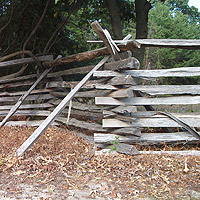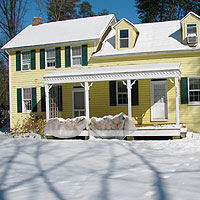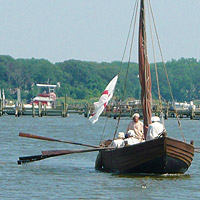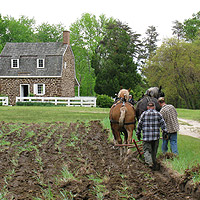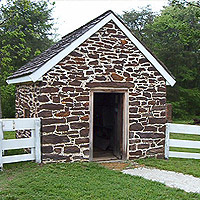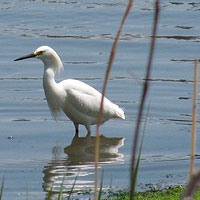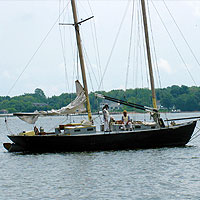
Public Hours
April through October
Sundays 1-4 PM (except Easter)
Extended hours based per event.
Explore
About the Farm
Hancock Family
Photo Gallery
History
Events Calendar
Upcoming:

Obituary: Edwin Calvert 2021
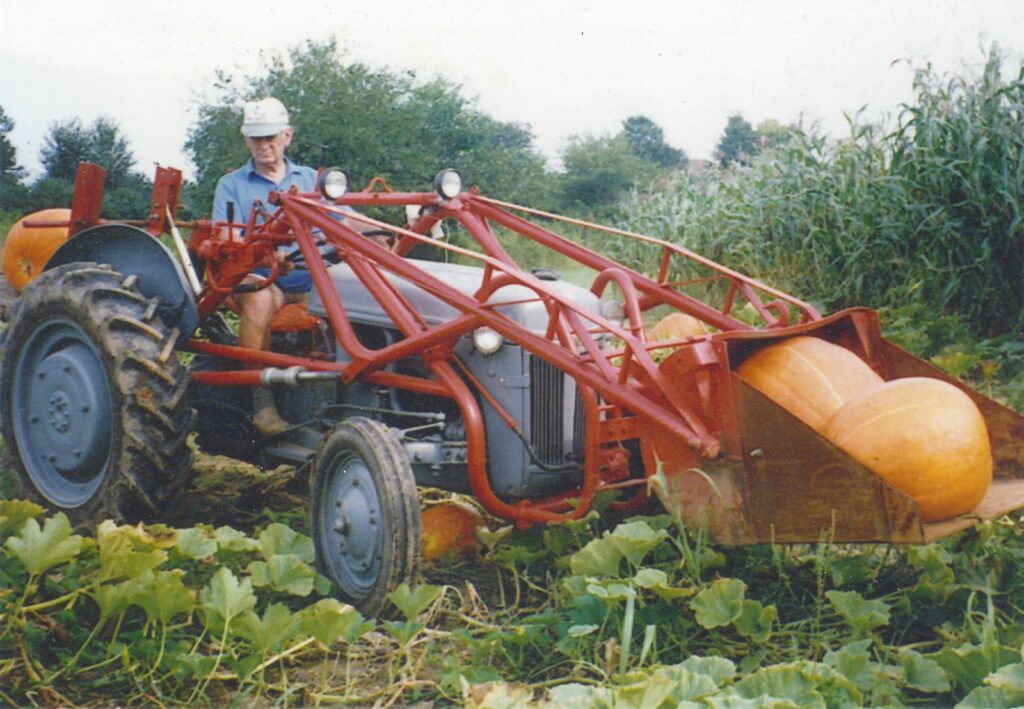
Ed Calvert on 1939 Ford 9N
Name: Edwin T. Calvert 7/16/1926 to 11/27/2021
Born on the family farm in Anne Arundel County, Maryland, attended local schools, graduated from Glen Burnie High School 1943. Operated farm with father until 1948. Worked part time as carpenter and Foreman of Construction in older brother’s company while farming. Worked as auto mechanic 1948 to 1954 while continuing farm operations part time including a Road Stand (Roadside Market).
At age 16 the Anne Arundel County commissioners asked me to remain home and continue farming instead of enlisting in the service.
Married Lauretta Marie Brumwell in 1946. Raised 4 children (Tom, Betty Ann, Bill, and Marie). All were college graduates with jobs and families of their own. There are 7 grandchildren and 5 great grandchildren.
Worked at Koppers Co. from 1954 to 1968 in American Hammered Piston Ring Div. in Baltimore.
Started evening classes in 1955 and was awarded a B.S. degree in Industrial Management from the Johns Hopkins University 1966.
Recruited by Boeing Vertol in 1968, moved to Delaware County, PA.
Hired in 1970, by Schramm Inc. West Chester, PA, a family owned company that manufactured Air Compressors and specialized hydraulic equipment such as self-propelled air compressor tractors and air operated underground piercing tools. When the Company changed direction in 1982, I left and operated as a freelance consultant and teacher. Taught Basic Science Courses at Delaware County Community College. Assisted my local government, Edgmont Township, Delaware County, PA during this period and was designated as Assistant Township Manager.
While inspecting potential retirement farms in 1989, I stopped in Conewago Township, Hanover, PA to question an ad for Township Manager. Was hired 1990 as the first Professional Manager of Conewago Township, Adams County, PA. Retired in 2003 at age 77.
OTHER ACTIVITIES
Active in education organizations while children were in school. Board Member Historic Annapolis Inc. Board Member and VP of Hancock’s Resolution Foundation, wrote and published Hancock’s Resolution Two Hundred Years and Counting in 2000. After move to PA in 1968, active in Methodist organizations. Active in local government organizations in Adams County, PA. Wrote The Calvert Family of Anne Arundel County, Maryland which was published in 2017.
HOBBIES
Local and Family Historian – guest speaker at National One Room School Conference at Northern Illinois Univ. in 2001, my paper was published by the Blackwell Museum for Education, an integral part of N. Illinois University. Speaker again in 2004 when annual Conference held at Univ. of Northern Iowa. Genealogist – direct descendent of William Calvert son of Leonard First Gov. of MD, Hancock, Cook and Blunt, ancestors of my other grandparents in MD by 1700. Bird Carving (wooden decoys and song birds), other woodworking. Member, Ward Brothers Waterfowl Museum, Salisbury MD. And member the National Wildlife Federation. Gardening, also collecting and operating Antique Farm Tractors (4)
